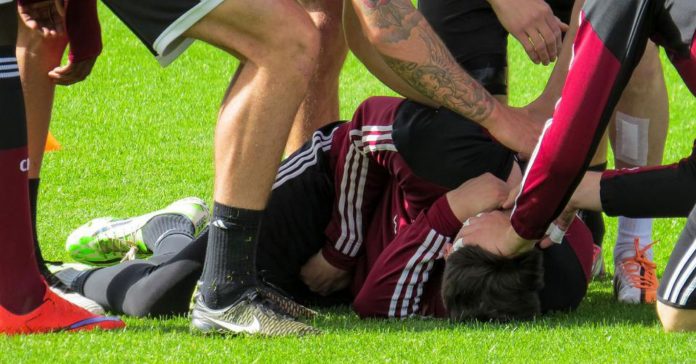While engaging in sports can help you achieve healthy body weight, maintain muscular strength and improve your heart and respiratory condition, it exposes your body to risks. A fall or trip, moving the wrong way, or sudden high-impact contact could result in a sports injury. Read on for the five most common sports injuries and how to treat them.
1. Fractures
A fracture, also known as a broken bone, results from high impact in sports like football, hockey, rugby, and soccer. It often occurs after a fall, and you notice limited movement in the affected area, swelling, and severe pain. Here are the different types of bone fractures:
- Open or compound fracture: Occurs when the injury breaks through the skin, exposing the bone.
- Closed or simple fracture: Where the broken bone does not penetrate the skin
- Complete fracture: Where the broken bone separates into multiple pieces
- Hairline: The incomplete or partial breaking of the bones
Fractures are severe conditions, so ensure that you seek medical attention after an injury for treatment to prevent long-term irreversible damage.
2. Concussions
A concussion is a brain injury resulting from a blow, jolt, or bump to your head and affects your brain function. Concussions are common in sports that involve a lot of contact, including soccer, football, and hockey. The symptoms of concussions include:
- Confusion
- Headache
- Vomiting
- Nausea
- Dizziness
- Lack of coordination
- Fatigue
- Memory loss
- Blurred vision
Concussions or any other impact on your head can result in severe health complications, so you should see your doctor immediately for diagnosis and treatment. Concussions often resolve within seven to 14 days, so be sure to seek medical attention if you experience post-concussion syndrome. Be sure to rest after a concussion diagnosis and avoid going back to the same activity level as before.
3. Strains
Strains occur when you tear or stretch your muscle tissues by over-extending them. A mild strain occurs due to repetitive motion, while acute strains are caused by jumping, lifting, or running during sports. You may also get a strain if you suddenly change direction. Some muscles prone to strains include hip flexors, quads, ACL, hamstrings, and the groin. The symptoms of strains include sudden pain, tenderness, muscle spasms, weakness, bruising or redness, or limited motion in the affected body area. Strains are often minor injuries and heal within a few days; however, do not hesitate to seek medical attention if you experience severe, persistent pain.
4. Tennis elbow
Did you know that tennis elbow accounts for 7% of sports injuries? Tennis elbow, also referred to as golf elbow, is caused by repetitive motion in your wrists and arms, causing the ligaments in the elbow to strain. You do not have to play tennis to suffer from tennis elbow. If your occupation or sport involves similar repetitive motions that cause tears on tendons and stress muscles, you are vulnerable to the condition. Consider using anti-inflammatory medication and resting the affected area to resolve the condition.
5. Knee injuries
The knees endure the most pressure and stress during vigorous exercise or playing sports as they often carry the body weight. This could result in knee injuries, including tears in the anterior cruciate ligament, knee sprains, and dislocations. The most common signs of knee injuries include stiffness, pain, tenderness, bruising, and reduced range of motion. Be sure to warm up, use the correct posture and stretch to prevent knee injuries, as correcting the condition could sometimes necessitate surgery.
Conclusion
Engaging in various sports activities makes you vulnerable to fractures, concussions, strains, and knee injuries. Avoid sports injuries by preparing your body through warmups and stretching before playing.


